A Year in TV Guide explores the 1964-1965 television season through the pages of TV Guide magazine. Each week, I’ll examine the issue of TV Guide published exactly 50 years earlier. The intent is not simply to examine what was on television each week but rather what was being written about television.
Week #44
July 17th, 1965
Vol. 13, No. 29, Issue #642
Western New England Edition
On the Cover: McHale’s Navy (photograph by Gene Trindl).
The Magazine
There are an impressive seven articles in this issue, ranging in length from two to five pages. The cover article by Peter Bogdanovich is about McHale’s Navy moving to Italy for its upcoming fourth season. Despite Bogdanovich claiming to have learned, after spending several days with the producer and cast, why the move is being made he never really explains in detail why the series is changing its setting. Producer Si Rose had this to say:
After three years in the Pacific, we thought the Allied and Japanese forces had had enough of McHale. You know, new enemy, new relationships, a new dimension for McHale. We’ll say he had an Italian grandmother and understands Italian. Which, of course, Ernie does. The ratings have held up pretty well, but next year we’ll be up against Skelton and Kildare, both in color, and so really we’re anticipating.
According to Bogdanovich, Rose “grinned weakly” while saying this, suggesting the producer wasn’t entirely on board with the move. The rest of the article examines how cast members feel about the show, its move to Italy, their thoughts on being tied to a weekly TV series, and Ernest Borgnine’s desire to get back to movies. Most of the cast agree that McHale’s Navy is very popular with kids. Joe Flynn and Borgnine aren’t thrilled with the humor, though. Flynn would “prefer a more subtle brand of humor” while Borgnine doesn’t think “a person has to gag it up so much to be funny.”
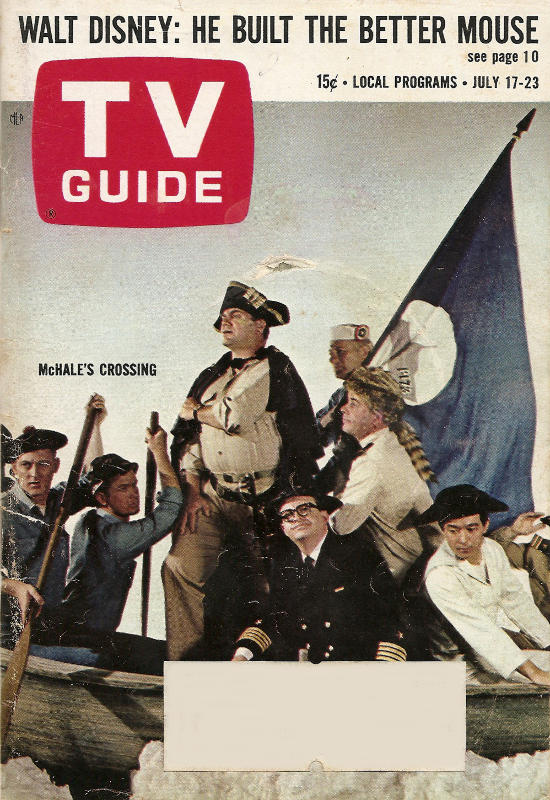
Front Cover – Copyright 1965 Triangle Publications, Inc.
The move to Italy, Flynn believes, will “either get the series renewed for three more years or it’ll destroy it and we’ll end this year.” [He was right, it did end after the 1965-1966 season.] Bob Hastings is happy to be continuing for another year while Carl Ballantine would rather be doing movies. Flynn would likewise rather have more varied roles to play but also recognizes the security of a weekly series. He is also thinking about running for state senate. Borgnine is tired of playing the same role week after week and feels the show has become stale. “We’ve got to the point where we don’t even have to rehearse any more–in our mind’s eye we almost direct ourselves.”
Melvin Durslag’s “Look Who’s Joined the Affluent Society” discusses how a number of TV sportscasters have become very rich, very fast. Curt Gowdy is making six figures a year while Chris Schenkel just signed a three-year contract with ABC that earns him at least $125,000 a year. Other successful sportscasters mentioned by Durslag include Jim McKay, Lindsey Nelson, Jim Simpson, and Jack Whitaker. There is one potential problem for these men: the networks are increasingly turning to professional athletes to provide TV commentary. CBS has former Yankees Joe Garagiola, Phil Rizzuto, and Jerry Coleman on its radio/TV team, for example, and they are here to stay.
“A TV Tour of the U.S. — with KGUN and KMRA” by David Lachenbruch is a humorous two-page essay in which the author uses TV call letters as words. Here’s an example:
It’s all right to be a KARD in Wichita, a WHIZ in Zanesville, O., WISE in Asheville–or even a KOOK in Billings, Mont. You can get KUHT in Houston and KCOY in Santa Maria, Cal. But they’ll KUSU in Logan, Utah (you’ll also get KUSD in Vermillion, S.D.).
The longest article is Edith Efron’s profile of Walt Disney titled “Still Attacking His Ancient Enemy–Conformity.” Efron describes Disney as “an international institution” and “one of the few men in show business whose names stand for something significantly larger than their own work.” She also argues that he “is one of the most disguised personalities alive,” using dullness and a “rural affability” to avoid conversation. If you can keep him talking long enough, “a remote twinkle appears in the preoccupied eyes, and the man emerges.”
Disney was a dreamer as a kid, didn’t have much formal education, isn’t motivated by money, hates laziness, and yearns to uncover originality and creativity in his workers, going as far as to spy on them in the hopes of discovering repressed talent. His reputation as a tyrant is not entirely undeserved but Walt Kelly (creator of Pogo) insists that Disney is easy to work with if you are a hard worker. He doesn’t like critics but enjoys compliments from famous men like Henry Ford, the late Supreme Court Justice Burton, and Sergei Eisenstein. He doesn’t worry about having to continually top himself. Instead, he looks for little ideas and gets interested in them.
“Is ‘Sunrise Semester’ Flunking Out?” investigates the CBS educational series offering college credit and concludes that it may not be much of a success. On the air locally in New York City over WCBS-TV since 1957, it was a popular and critical success before joining the network two years ago. Last semester there were 43 colleges using the series and only a few had more than 25 viewer-students enrolled. The problem is making education appealing rather than boring. “Education on TV is generally dull stuff,” explains a CBS official. “But what can we do about it? We can’t back a professor with the Rockettes.”
Dwight Whitney’s three-page article about Agnes Moorehead includes some interesting quotes from the Bewitched co-star. The ABC sitcom’s first season was rushed and nearly always behind schedule due to star Elizabeth Montgomery’s pregnancy, which delayed filming (as described in the November 28th, 1964 issue). Episodes were being filmed dangerously close to air date and during Whitney’s visit to the set, there were all sorts of production problems. “This is the treadmill,” explained Moorehead. “This is TV. Mad, hectic. No time to relax. Every second counts.” She continued:
The treadmill’s a marvelous living. But the actor who’s creative gets terribly depressed. I’ve shied away. I’m not the treadmill type. I haven’t any idea about the story. How could I? I only got it this morning. I don’t care how good you are, you get many scripts not up to par–what you might call ‘hack.'”
Of Montgomery, Moorehead was respectful but unemotional: “She has a quality. Charm, warmth, intelligence. Of course, you know she plays herself. When I was an ingenue, we were always characterizing.” The bulk of the article isn’t about Bewitched, however. It covers Moorehead’s childhood but focuses mostly on her work with Orson Welles and its impact on her career.
The final article is a very brief profile of singer Nancy Wilson. She talks about her childhood and her first TV series back home in Ohio. She married her husband in 1960 and he spends most of his time these days managing their music-publishing company and their talent-management company. They have a two-year-old son who they did not bring with them when they traveled to Montgomery. “I had never been in the south before,” said Wilson, “but when I heard about Montgomery, I knew I just had to go–not to sing but to march.” At the end of the article, Wilson describes how she sees herself: “I’m not a professional Negro. I’m a human being first–an American second–and a Negro third, and I’m not the least bit unhappy about it.”
The “As We See It” editorial this week is a bit unusual, focusing on the blazers worn by network sports production staff and announcers. ABC blazers have either a white and blue symbol over the left breast (for ABC Sports) or a red, white, and blue symbol (for ABC’s Wide World of Sports). Over at CBS, each blazer has a gold emblem with the CBS “eye” in the middle, although the symbols are different for each sport. As for NBC, its blazers are navy blue and the symbol is light blue with a gold border and NBC (in silver) and Sports (in gold). This “blazer blight,” opines TV Guide, has spread to individual stations where cameramen, engineers, and even salesmen wear blazers. “It all smacks a little of uniforms and regimentation, but you’ve got to admit that it makes the broadcasting people look pretty good.”
Cleveland Amory reviews Peter Jennings this week and sings the praises of the youthful ABC anchor. Jennings may have been hired to try and reach younger viewers, and ABC may have had to go to great lengths to highlight his credentials, but he has delivered. “He is, first and foremost, technically competent. He varies his Teleprompter with notes which, we note gladly, when he does look at then, he looks at them firmly and bravely and not surreptitiously.” Amory also points out that Jennings doesn’t make mistakes often, he changes his pacing, he goes out on location, and he isn’t sarcastic.
News from the Hollywood and New York TV Teletype columns:
- Flipper is losing Tommy Norden due to “contract conflicts.” [Whatever the conflicts were, they were resolved because Norden remained with the series for its entire run.]
- NBC will air a special about the surrender of Japan during World War II on September 19th.
- NBC’s Chet Hagan is working on a documentary about the Kentucky Derby that will take a year to finish. It will follow one horse as it prepares for and competes in the race.
- NET will air a videotaped production of “The Play of Daniel” on Christmas Eve.
- NBC may get rid of its peacock symbol because there will be so much color during the 1965-1966 season that the peacock’s “preening could get monotonous.” [NBC did eventually drop the peacock but not until 1975. It returned in 1979.]
- Gunilla Hutton and Linda Saunders have been signed to replace Jeannine Riley and Pat Woodell on Petticoat Junction.
- Walter Brennan is working on a new series described as a mix of The Tycoon and The Real McCoys.
- Bob Steele has joined the cast of F Troop.
- CBS is working on a series for British singers Chad and Jeremy, said to be a musical version of Route 66.
Rounding out the national section is a two-page picture feature revealing how Bob Denver and a dummy teamed up to film a 20-foot fall from a coconut tree for an episode of Gilligan’s Island. There is also the regular TV crossword puzzle.
There are four news reports in the “For the Record” column in the listings section this week:
- The FCC last week circulated a policy statement intended to address loud commercials. Broadcasters are urged not to use reverberation chambers, rapid delivery, poor control room procedures, immoderate use of volume compression, and high volume levels on recordings. “Strict adherence” is expected despite the fact that the FCC admits it has no way of measuring loudness.
- Also last week, the National Academy of Television Arts and Sciences revoked its Emmy nomination of a documentary called “My Childhood” about James Baldwin and Vice President Humphrey because it wasn’t made available to at least half the nation’s viewers before April 30th. Producer Metromedia, Inc. responded by pulling out of the Academy.
- Stan Freberg composes radio commercials for the United Presbyterian Church and is looking at bringing them to television, with the church paying production costs and Freberg working for free.
- Kate Smith will make six TV appearances next season: two on The Ed Sullivan Show, two on The Dean Martin Show, and two on The Hollywood Palace.
The letters page this week features six letters and five topics. The June 28th CBS special “It’s What’s Happening, Baby!” receives two letters:
CBS’s “It’s What’s Happening, Baby!” made me realize that the President does care about teen-agers, and that education is important.
Susan Crabtee
Owensboro, Ky.If that’s “What’s Happening, Baby!” we’re in Trouble, and that starts with T, and that rhymes with P, and that stands for psychoneurotic.
Gene Scott
New York, N.Y.
There was also a letter from Tony Verna, producer/director for CBS Sports, writing in response to a letter published in the June 26th issue. He explains that the use of isolated cameras dates back to “the early days of Roller Derby coverage, when director Dwight Hemion assigned a specific camera to watch Tuffy Brasuhn make her move from deep in the pack.” Verna determined later that videotape could preserve the continuity of the game by replaying the isolated camera shots immediately after a certain play. That was pioneered during the 1963 Army-Navy game by CBS.
In response to a letter printed in the June 19th issue, the head of the Department of the Navy’s Audio-Visual Branch, Lt. Cmdr. H.E. Padgett, wrote a letter to explain that McHale’s Navy never asked for the assistance of the Navy and the Navy never offered it. However, the Navy is cooperating with the producers of Convoy and The Wackiest Ship in the Army.
Another letter dealt with the July 3rd editorial:
Concerning your July 3 “As We See It,” which urges viewers to actively support programs they like, I wish I could agree. But as long as sponsors and networks continue to play the “numbers” game, those of us to whom “Nielsen” is a dirty word shall, I am afraid, continue to be the “disinherited.”
Finally, there was a letter praising FCC Commissioner Lee Loevinger, who was profiled in the July 3rd issue.
The TV Listings
[We’re still about two months from the end of A Year in TV Guide but this is the final Western New England Edition in the collection of TV Guide issues I inherited from a family member. That means this is the last time highlights from Zenith Radio Company’s Phonevision pay television experiment over Connecticut’s WHCT-TV (Channel 18) will be featured.]
ABC’s weekly 2PM baseball game on Saturday, July 17th featured the Baltimore Orioles vs. the Detroit Tigers. At 8:30PM, NBC pre-empted The Famous Adventures of Mr. Magoo for a half-hour Mariner IV special. NBC News correspondent Roy Neal and Dr. Albert R. Hibbs of Caltech hosted the special from the Jet Propulsion Laboratory in Pasadena. NBC’s Encore on Sunday, July 18th from 5-6PM repeated “Changing Matilda: The New Australia” with Chet Huntley. [It originally aired on March 31st, 1964.]
CBS began airing repeats of its short-lived 1963 sitcom Glynis at 9PM on Monday, July 19th as a summer replacement for The Lucy Show. [Just 13 episodes of the series, which starred Glynis Johns, were produced and broadcast by CBS from September and December 1963.] At 10PM, CBS aired a repeat of CBS Reports narrated by Charles Collingwood (“The 150 Lira Escape”) about low budget Italian cinema. [It originally aired on September 2nd, 1964.]
On Friday, July 23rd at 8PM, ABC aired the final episode of FDR, its half-hour documentary series about President Roosevelt. It dealt with the impact of FDR’s death on the United States and World War II. According to a note in the listing, “selected episodes” of the series will start repeating next week. From 9:30-10PM, CBS aired an unsold pilot called “Starr, First Baseman” as part of its Vacation Playhouse series. Martin Milner played a New York Yankee first baseman whose rookie year is going quite well until he’s hit by a fastball.
Here are the TV Guide close-ups for the week:
- Secret Agent – “That’s Two of Us Sorry” (CBS, Saturday at 9:00PM)
- Discovery ’65 – “Yuri and Irena Come to America” (ABC, Sunday at 12:00PM)
- Walt Disney’s Wonderful World of Color – “Ida, the Off-Beat Eagle” (NBC, Sunday at 7:30PM)
- The Rogues – “Viva Diaz!” (NBC, Sunday at 10:00PM)
- The Fugitive – “Ballad for a Ghost” (ABC, Tuesday at 10:00PM)
- Dr. Kildare – “What’s Different About Today?” (NBC, Thursday at 8:30PM)
- FDR – “Going Home” (ABC, Friday at 8:00PM)
Here are some of the programs available for purchase by subscribers to Zenith Radio Company’s Phonevision pay television experiment on Connecticut’s WHCT-TV (Channel 18):
- Movie: Shane (Saturday at 7:30PM, $1.25)
- Movie: Premature Burial (Sunday at 7:30PM, $1.00)
- Movie: Joy in the Morning (Monday at 9:00PM, $1.25)
- Movie: Up from the Beach (Tuesday at 7:00PM, $1.25)
- Movie: Girl with Green Eyes (Wednesday at 9:00PM, $1.25)
- Movie: 30 Years of Fun (Friday at 7:30PM, $1.00)
Locally it was a busy week with a mixture of baseball and specials. At 1:55PM on Saturday, WNHC-TV (Channel 8) aired a baseball game between the Washington Senators and the New York Yankees. At 2:25PM, WHCT (Channel 18) aired a baseball game between the New York Mets and the St. Louis Cardinals. From 4-5PM, WHDH-TV (Channel 5) aired a special about 75-year-old retired truck driver James Emory Bond, who discussed religion, prejudice, crime, marriage, family, and faith. [I believe this was a syndicated rather than local program.]
At 6:30PM, WNHC-TV aired an hour-long special about the Junior Champs high school sporting event held last week in Hartford, sponsored by the Junior Chamber of Commerce. Carl Grande served as commentator. At 7:30PM, WHDH-TV, WWLP (Channel 22), WHNB-TV (Channels 30 and 79), and WRLP (Channel 32) aired a baseball game between the Boston Red Sox and the Cleveland Indians. From 9:30-11PM, WNHC-TV aired the “Miss Connecticut Pageant” live from the New Haven Arena. Johnny Desmond hosted the special.
On Sunday at 12:55PM, WNHC-TV aired another Senators-Yankees baseball game while at 1:55PM WHCT aired a game between the Mets and the Milwaukee Braves. From 2:30-4PM, WNAC-TV (Channel 7) aired a water ski show live from the Charles River in Boston. Featured were Ken White, Don Craven, Sandra Ann White, Judith Haskins, and Ken “Punky” Frazier. WBZ-TV (Channel 4) aired another installment of its live local Massachusetts talent series from 4:30-5PM with contestants from Brighton, Chestnut Hill, Worcester, Lynn, Lincoln (Rhode Island), and North Providence (Rhode Island).
WHDH-TV, WWLP, WHNB-TV, and WRLP aired a Red Sox-Yankees baseball game at 8PM on Monday. WHDH-TV pre-empted the CBS national line-up starting at 8PM. Because the other CBS affiliate in the region, Connecticut’s WTIC-TV (Channel 3), regularly aired a movie on Mondays from 7-9PM, viewers in the area were unable to watch CBS programming from 8-9PM, including Vacation Playhouse from 8:30-9PM. [The unsold pilot this week, “Acres and Pains,” starred Walter Matthau as a writer who moves to the country and runs into trouble evicting the tenant on his new farm.]
On Wednesday, July 21st from 8:30-9:30PM, WNHC-TV pre-empted ABC’s Shindig to air a David L. Wolper documentary about the Nuremberg trials. Richard Basehart narrated. WEDH (Channel 24) aired an hour-long Hartford Symphony concert from 8-9PM on Friday. A repeat, the concert originally aired on January 10th. Arthur Winograd conducted. Featured were soprano Linda Newman and violinist Elmar Oliveira.
Here’s an advertisement for repeats of The Saint on WHYN-TV (Channel 40):
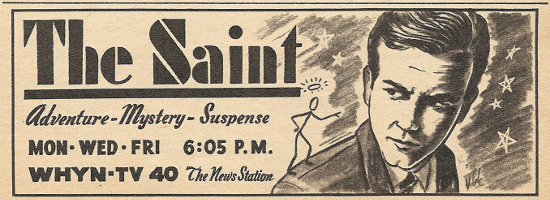
Advertisement for The Saint on WHYN-TV – Copyright 1965 Triangle Publications, Inc.
And here’s an advertisement for Girl with Green Eyes on WHCT-TV (Channel 18) on Wednesday, July 21st:
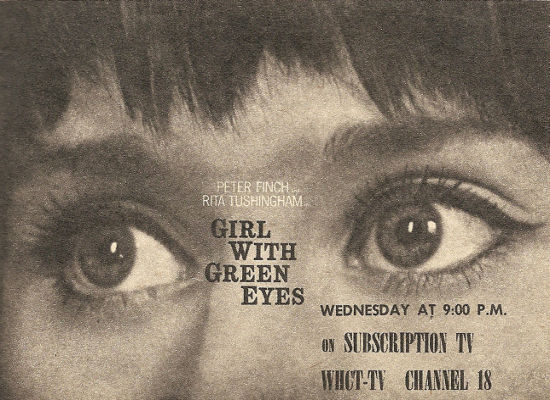
Advertisement for Girl with Green Eyes on WHCT-TV – Copyright 1965 Triangle Publications, Inc.
Here are the episode descriptions for Dateline Boston, a local series broadcast live and in color Monday through Friday from 6-6:25PM on WHDH-TV (Channel 5):
Monday, July 19th, 1965
Capt. Bob sketches whaling boats of New England.Tuesday, July 20th, 1965
“American Music” is presented.Wednesday, July 21st, 1965
Wildlife in the Fort Devens area is seen.Thursday, July 22nd, 1965
“Learn to Swim,” Part 2.Friday, July 23rd, 1965
Cab Calloway and his daughter are guests.
That’s it for this week. Hit the comments with your thoughts.

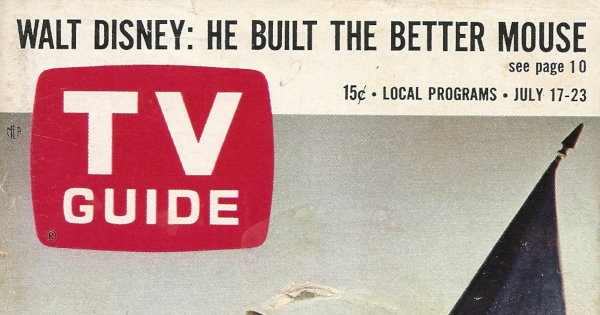
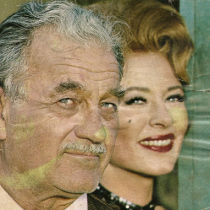
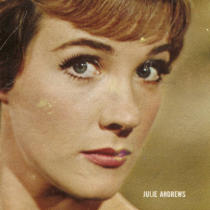
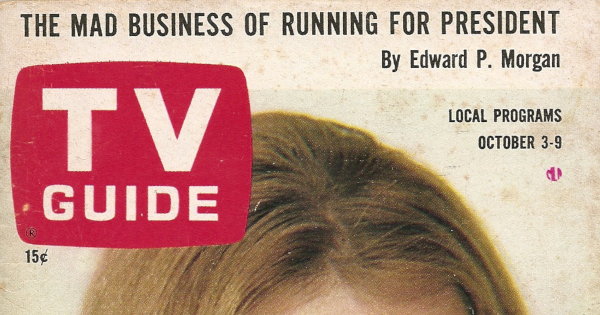



“The FCC last week circulated a policy statement intended to address loud commercials. Broadcasters are urged not to use reverberation chambers, rapid delivery, poor control room procedures, immoderate use of volume compression, and high volume levels on recordings. “Strict adherence” is expected despite the fact that the FCC admits it has no way of measuring loudness.”
I remember reading an article many years ago about how CBS in New York got in some trouble for purposely airing louder commercials.
I just found a few typos this week:
”
Gunilla Hutton and Linda Saunders have been signed to replace Jeannine Riley and Pat Woodell on Petticoat Junction.
”
Lori, not Linda, Saunders replaced Pat Woodell on Petticoat Junction. Linda Kaye Henning always played the third Bradley daughter through the show’s run. Me-TV has begun airing a Petticoat Junction promo with Henning, Saunders, and Hutton, and the women all still look pretty good.
”
…At 7:30PM, WHDH-TV, WWLP (Channel 22), WHNB-TV (Channels 30 and 70), and WRLP (Channel 32) aired a baseball game between the Boston Red Sox and the Cleveland Indians…
”
From what I recall in your previous posts, WHNB’s satellite (out of Torrington, CT) was on channel 79, not 70.
”
[The unsold pilot this week, “Acres and Pains,” starred Walter Matthua as a writer who moves to the country and runs into trouble evicting the tenant on his new farm.]
”
I assume this was Walter Matthau. This could be a fun pilot to see.
Thanks again for another nice look back. This was the issue on sale the day I was born, so I’ve had my own copies of it (from other editions) for a long time now. I’m tempted to go back & read some of these articles & listings now.
Thanks for correcting the typos. Couldn’t have done better myself. Can’t wait to see what editions will round out the year-there could be a Kansas City one or two in the mix.
Thanks for the WHNB-TV and Matthau corrections. As for Lori Saunders, her real name is Linda Marie Hines and according to the Internet Movie Database she was credited as Linda Saunders in a few movies and TV roles in 1964 and 1965. Her decision to start using the name Lori Saunders must have happened right around the time she joined the cast of Petticoat Junction.
Not sure if I heard this from an interview or read it in an article, but I believe the reason that they moved the characters on “McHale’s Navy” from the Pacific to Italy was set location. They had the Italy sets, used in movies and other TV Shows, sitting around and either wanted to get rid of the Pacific ocean sets or needed it for other productions, so they just shifted everyone over to the European campaign.
That doesn’t make sense…for the 1964-65 season just ending, Universal was filming both MCHALE’S NAVY and BROADSIDE on many of the same sets, I’m sure.
THE SAINT debuted in England in 1962, and the following year was offered in first-run syndication in the U.S.–which lasted until 1966. Then, along the lines of THE AVENGERS, the producers made a deal with NBC to air the show, in return for providing the extra money to film the show in color.
From 1967 through 1969, the show would replace something that had been cancelled mid-season, and run until September and the new schedule.